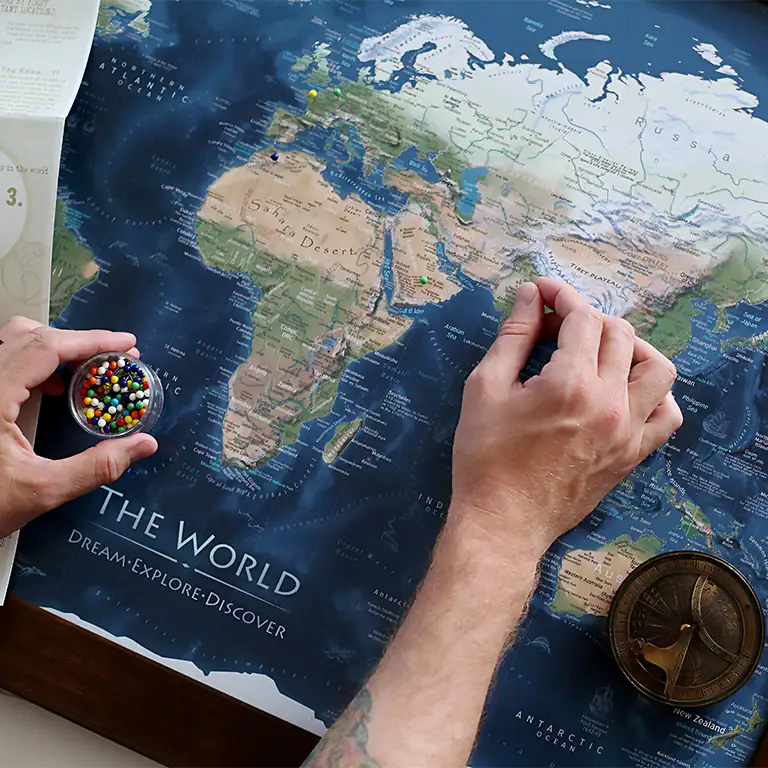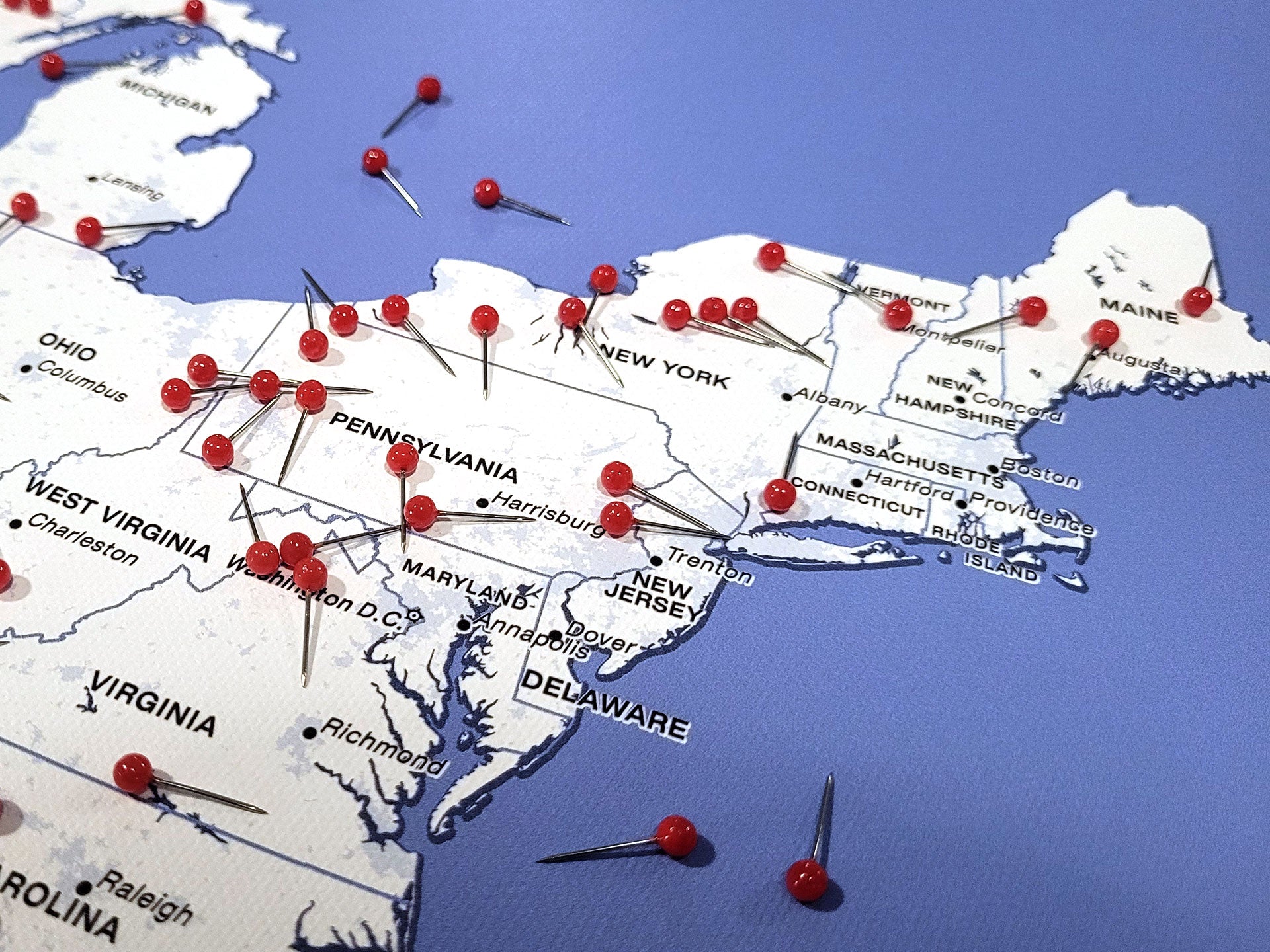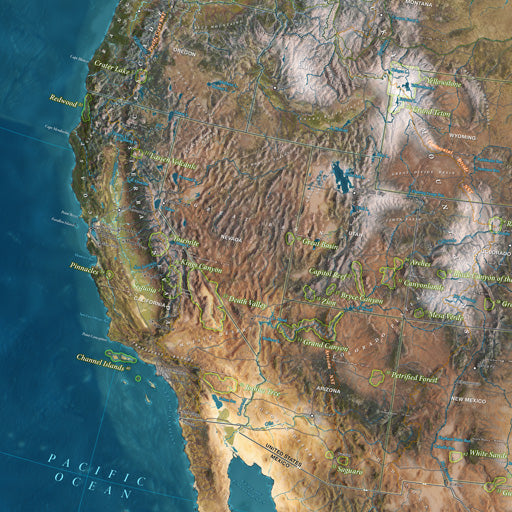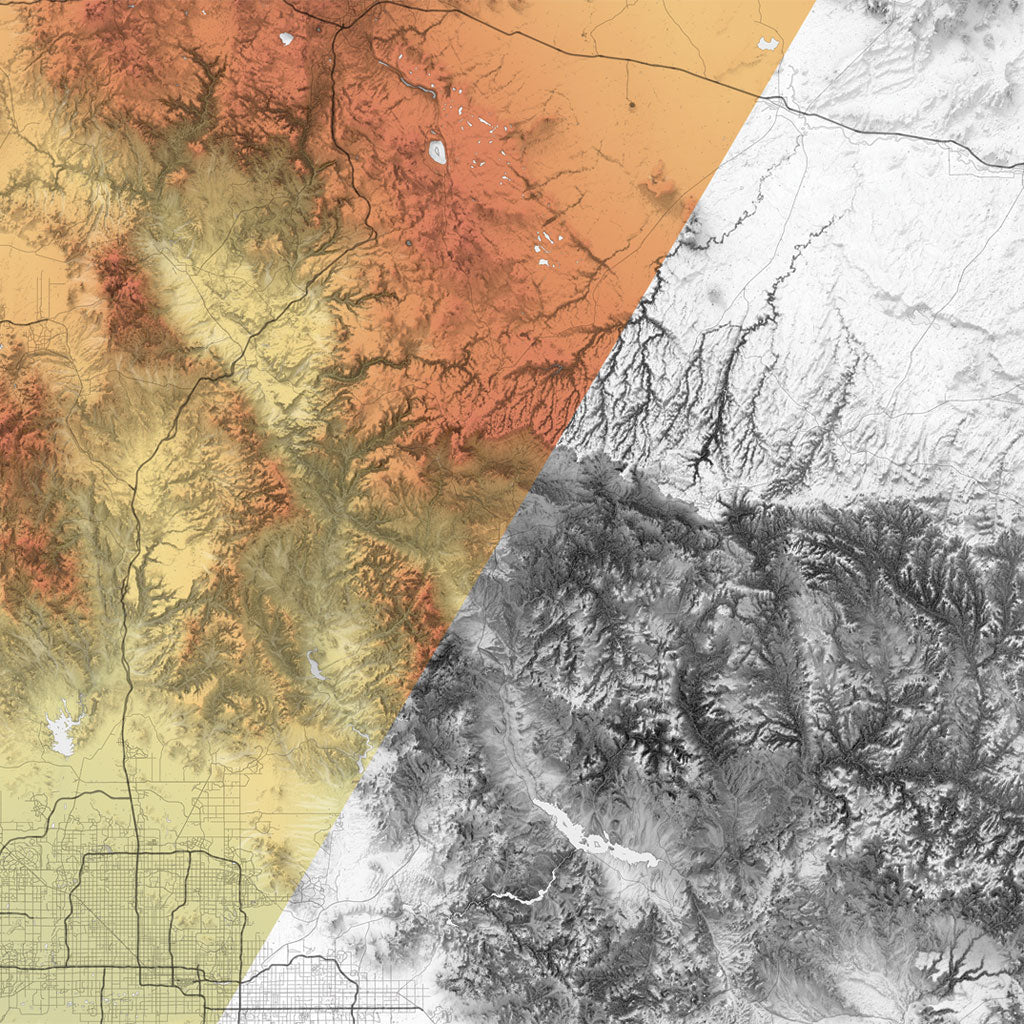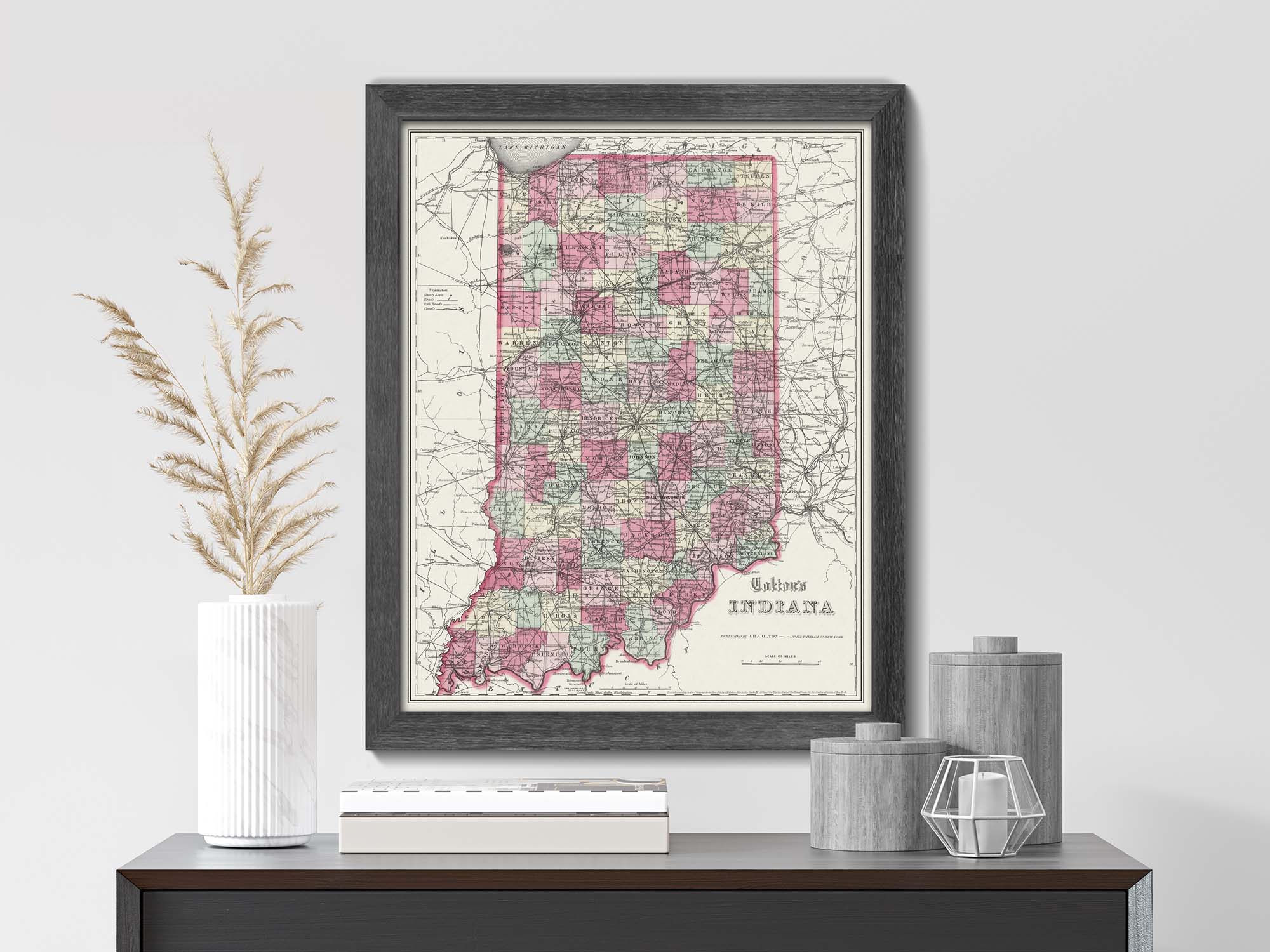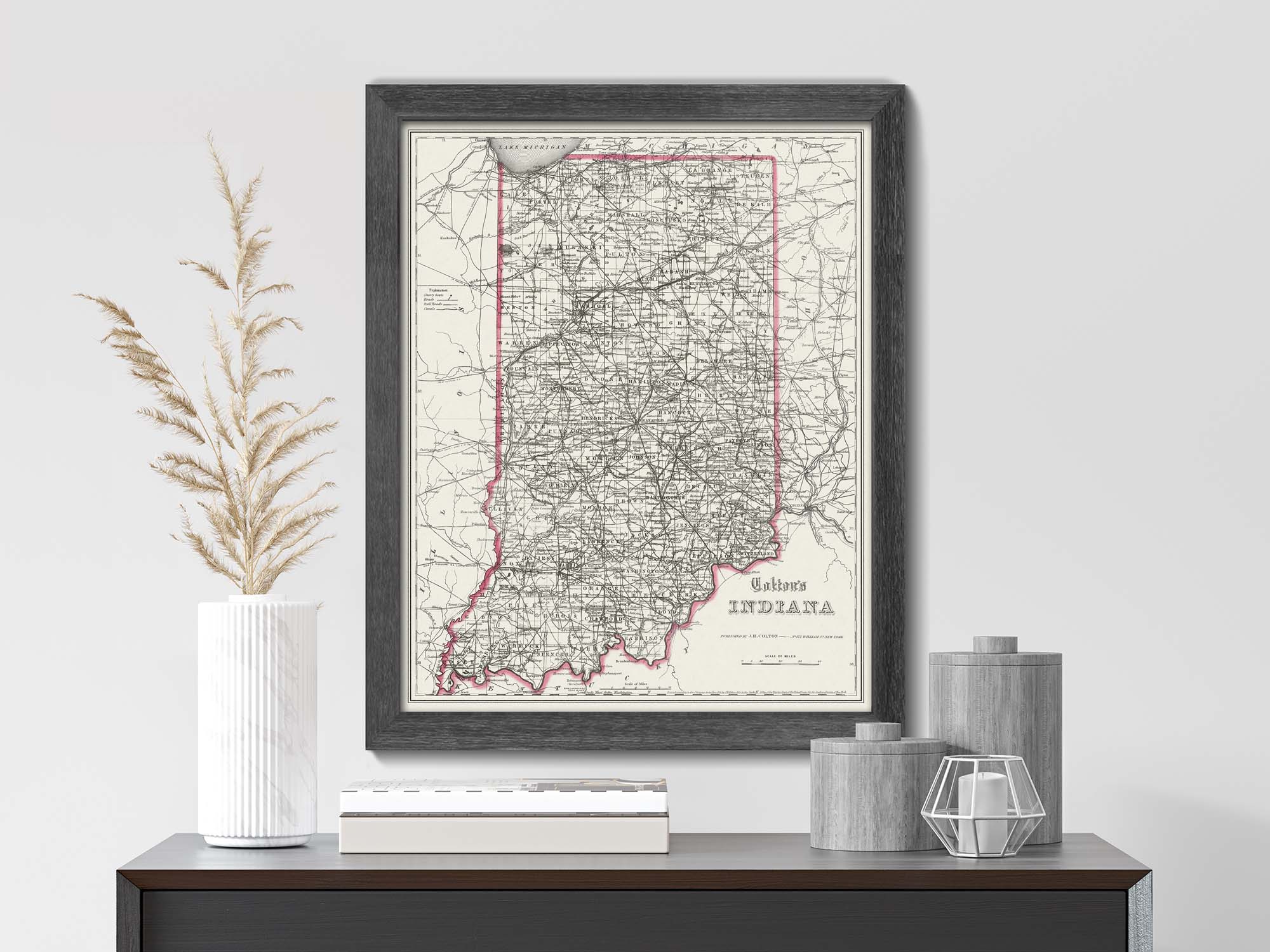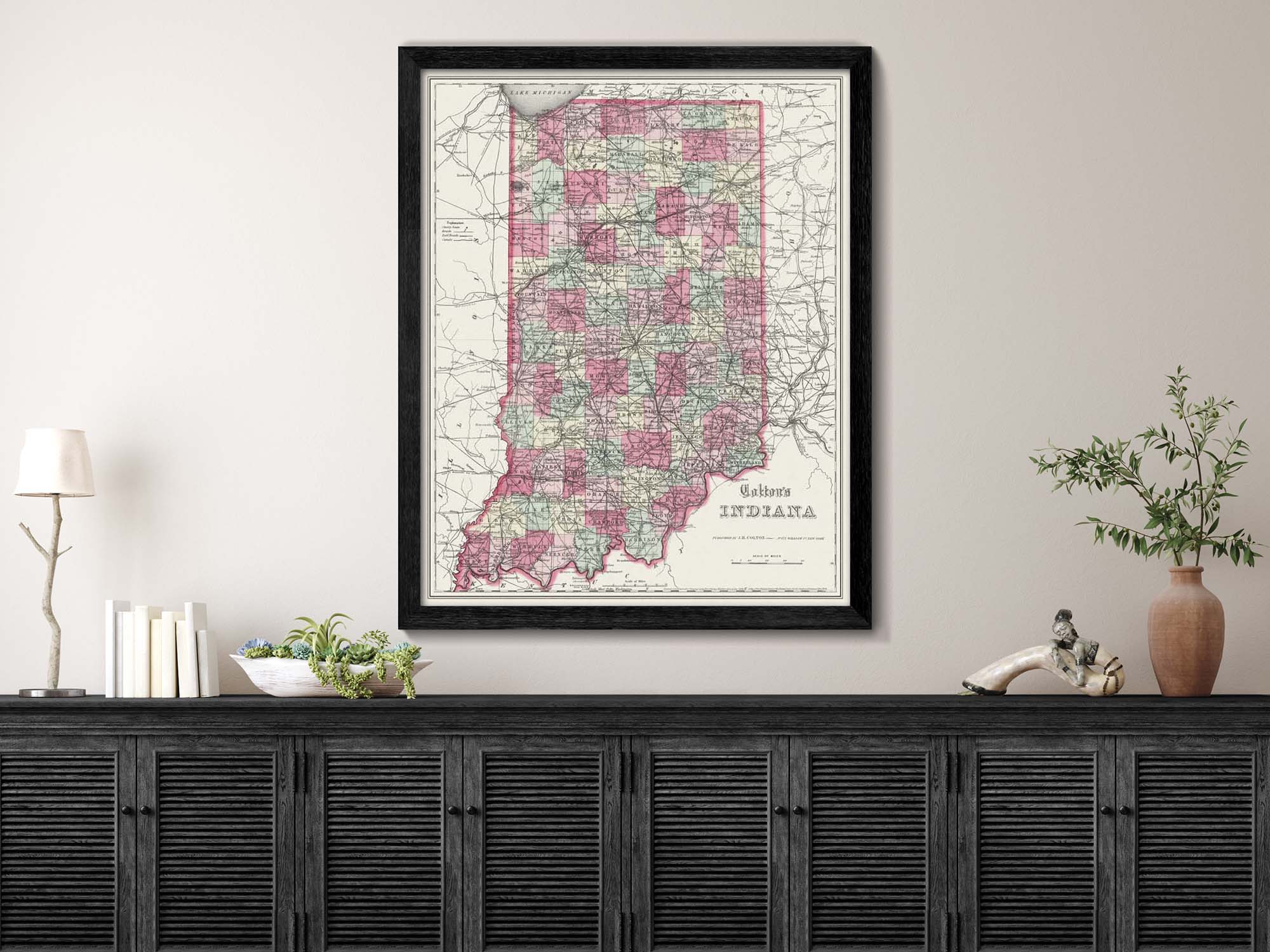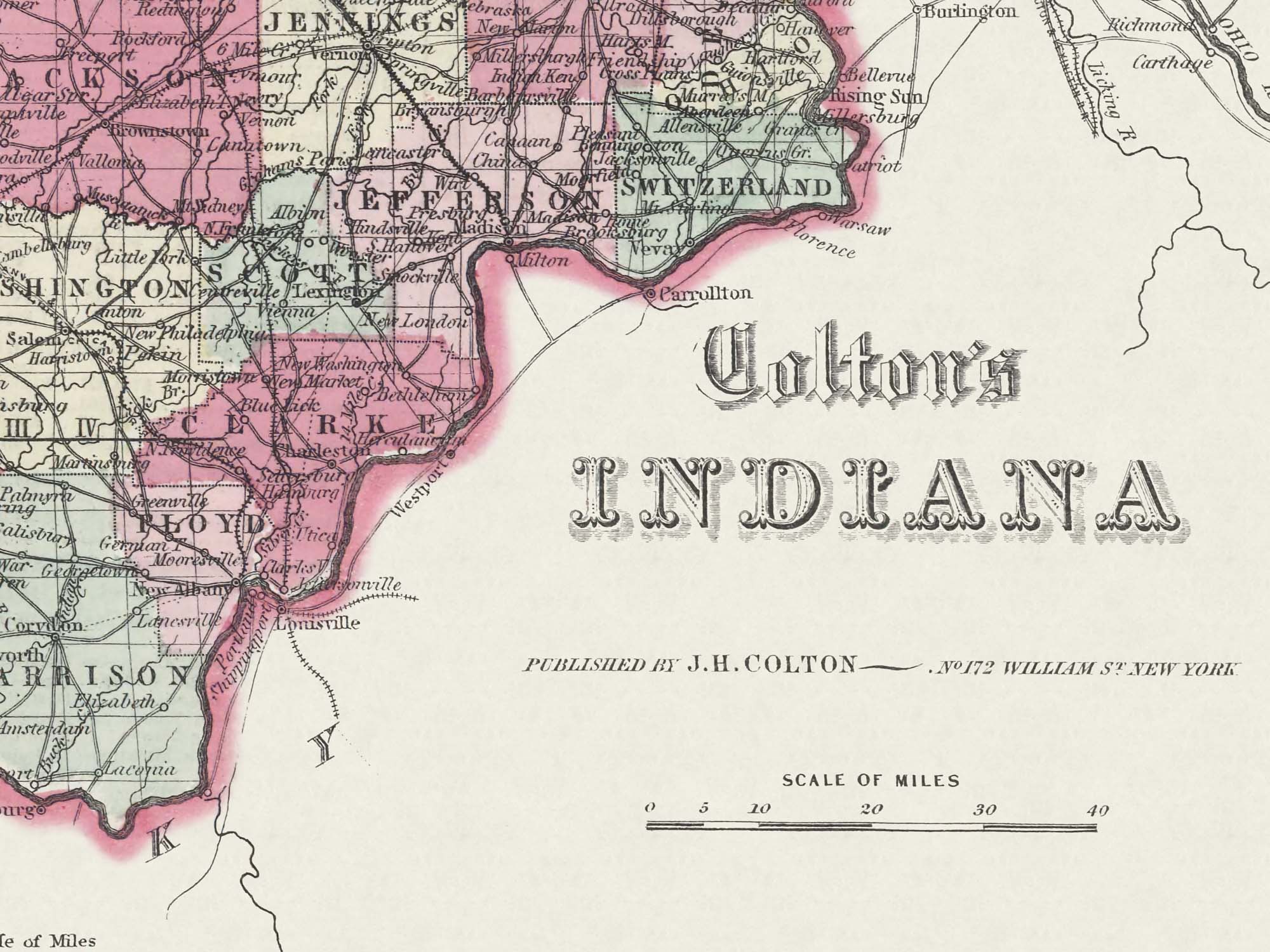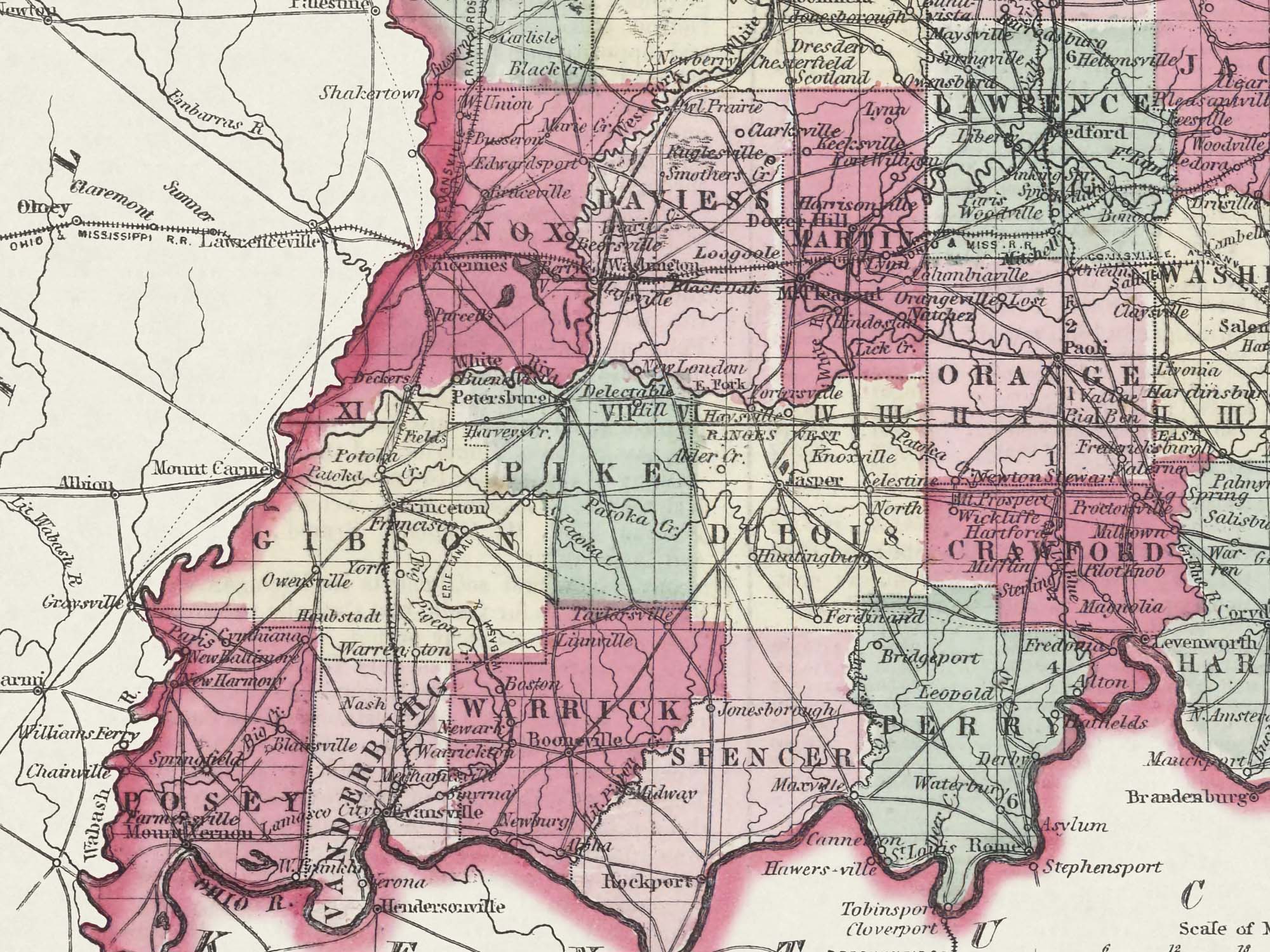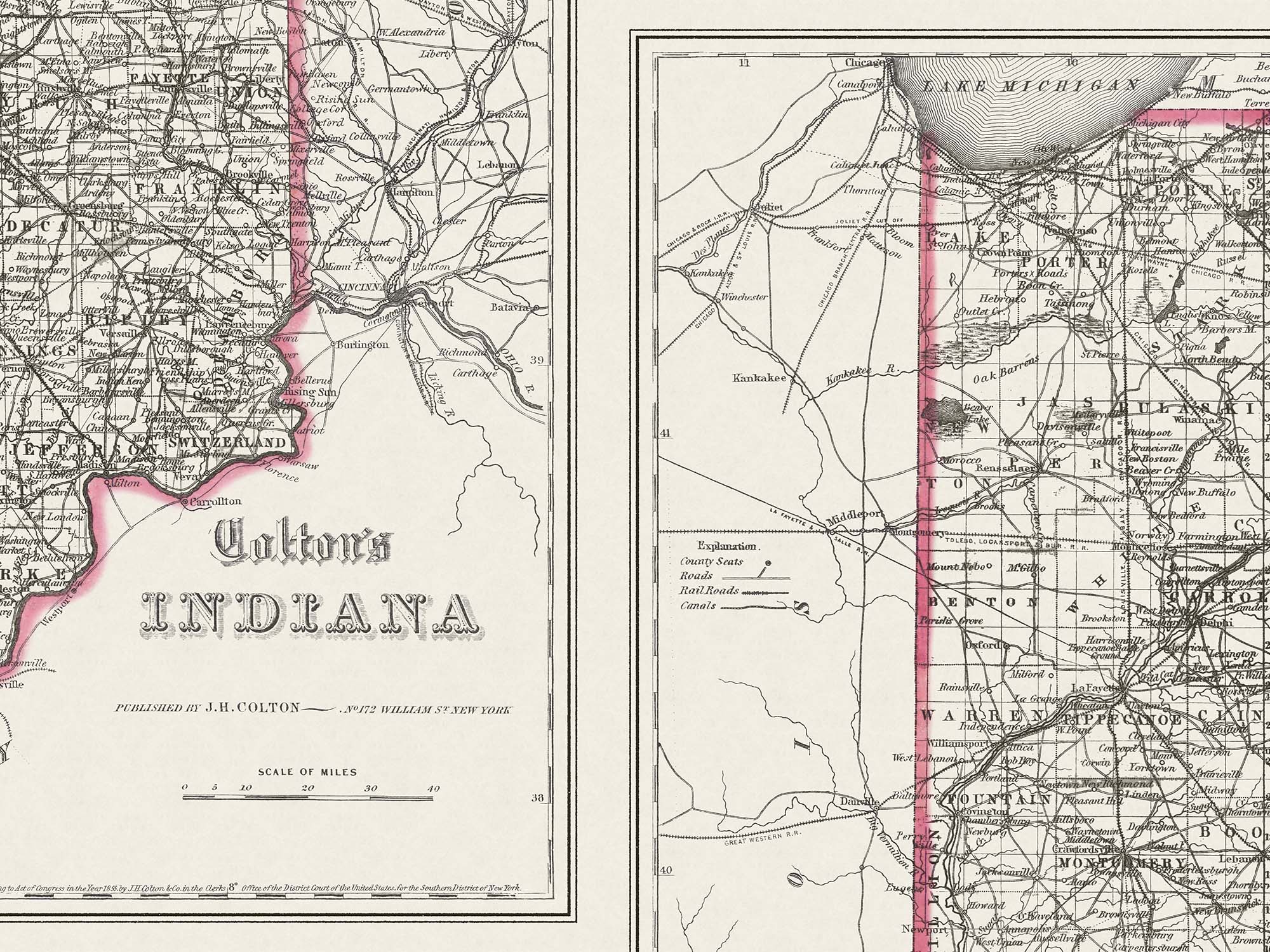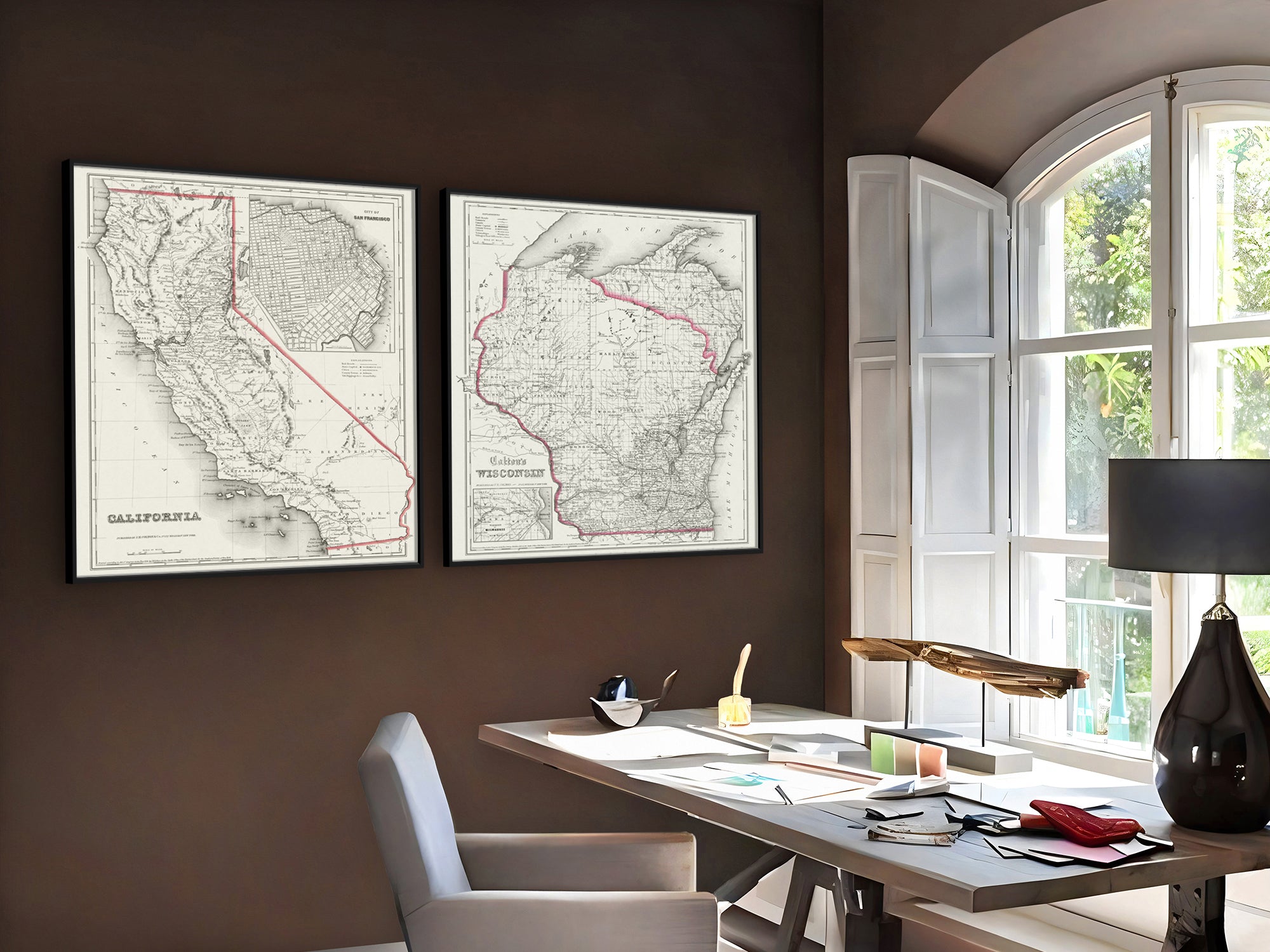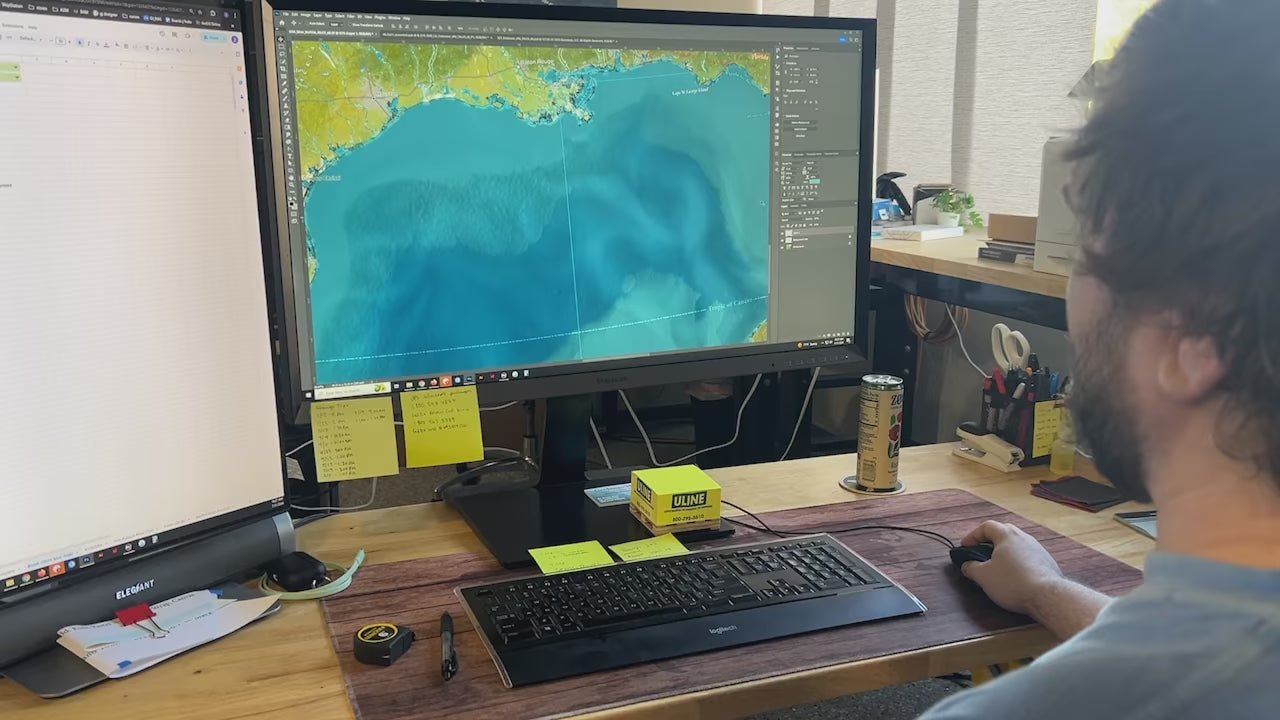This map is a faithful reproduction of the original 1850 map restored to its former glory using the latest digital imaging technology.
Vintage State Map of Indiana
Standard maps will enter production right away, within the next business day. Larger orders may take more time.
All push pin board maps (framed or canvas wrap) include push pins, are easy to hang, and ship free in the continental US. We'll select the optimal shipping method for fast delivery.
For personalized maps we collaborate closely to guarantee satisfaction. Expect a proof to be sent to you. Your swift responses will facilitate the production and shipping process.
If there are any problems with your map we will take care of you. Returns for all maps are straightforward and hassle-free.
For personalized maps, engaging with the email proofs we send ensures that the final product meets your expectations precisely.
We have 30+ years of cartography experience, meticulously craft each order by hand to ensure excellence, and 100% guarantee your satisfaction. We produce maps that are built to last, with state of the art production and archival quality materials.
Customize with quotes, legends, or dedications using "Personalize Map" options to craft your masterpiece map. Or reach out to us if you don't see the option you want.
We collaborate with you from design to approval of your proof so that you are 100% happy before we print and ship.
Our excellent customer service is always open to you.
Restored 1850's Map
Fine Art Quality
Impressively produced with Archival Inks, Rich Color Depth, and clear and vivid labels. We use premium matte paper.
Expert Craftsmanship
We prepare the map using Fine Art Giclee production techniques. We roll the map in a sturdy tube for shipping to provide a crease-less piece of art.
Vintage State Map of Indiana
- Description
- Specs & Construction
About the Map: Explore the geographic history of the state of Indiana in this historic map. This map is part of our vintage USA State Map Collection showing the geography of the states in the 1850-1860s and the time of the Civil War.
Restoration: The map is a reproduction of the original map meticulously restored to its former glory using the latest digital imaging technology. Using this technology, we carefully restored the colors, torn edges, creases, smeared writings and more. We enhanced features while keeping the original character and design of the map.
This map is unframed, sold as an art print. Frames are shown for illustration ONLY.
Geographic Details: This historic map shows many details of towns, roads, railroads, and waterways in the 19th century of the United States.
Shows historic cities such as Indianapolis, Fort Wayne, Evansville and more!
Explore the historic boundaries of the cities, counties, and states that have changed over the years. Discover physical changes in the geography - such as former lakes and canals used for transportation and agriculture.
Available Sizes: For an impressive display and maximum readability, choose the largest size available.
Smaller size prints make excellent wall art in groups. Please note that there is no guarantee that small text will be legible in print.
Great Gift For: Interior Designers, Teachers, History Buffs, Anniversaries, Birthdays, Friends, Family, and many more!
Production and Shipping Times: The amount of time it takes for your map to arrive depends on where you live and how fast you approve the proof if you’ve ordered a custom map. See Production & Shipping.
Quality and Guarantee: We stand behind our work and guarantee the construction and quality. Contact us if you have any problems with your map and we will coordinate to ensure you are very happy with your purchase.
Materials and Production: This reproduction is printed on Fine Art Museum Quality Paper with giclée inks. The thick paper is archival quality and acid-free with vivid color definition.
Paper details:
- 10 mil thick
- 230 gsm weight
- Museum Quality Matte finish
Made in the USA by a USA Small Business and Professional Geographer & Cartographer.
Shipped in a tube and rolled to eliminate creases
Why choose GeoJango Maps
- We have a lifelong passion for maps, backed by 30+ years of cartography experience and Master's Degrees in Geographic Information Systems (GIS) from Penn State University and Environmental Science from the University of South Florida.
- Our incredible investment into the design of our maps results in unparalleled detail that matters: they will educate you, and grow with you as you travel the world and track your travels—where other maps miss the mark.
- We’ve built the leading map production studio in the USA and use exclusively USA-made materials. Each pin map is proudly crafted by hand, printed by us on the finest materials, mounted on museum-quality Gatorfoam, and carefully framed just for you.
History of the Time
The 1850s were a dynamic and formative period in the history of Indiana, marked by economic development, political shifts, and the growing tensions over issues such as slavery and statehood.
Economically, the 1850s marked a period of expansion and diversification for Indiana. The state's fertile soil and favorable climate supported agriculture as a significant economic activity, with crops like corn, wheat, and livestock playing crucial roles. Industrialization also gained momentum, particularly in cities like Indianapolis, where manufacturing and trade flourished. The construction of railroads and canals further facilitated transportation and commerce, connecting Indiana to regional and national markets.
Political changes and debates shaped Indiana's trajectory during the 1850s. The state's early history was marked by its opposition to slavery, as reflected in its first constitution of 1816, which prohibited slavery. As tensions over slavery grew nationally, Indiana continued to position itself as a free state. The passage of the Fugitive Slave Act in 1850 heightened the debates over the institution of slavery and led to increased tensions between pro-slavery and anti-slavery factions.
Indiana's role in the national political landscape was also highlighted by its contributions to the newly emerging Republican Party. The party's opposition to the extension of slavery into new territories resonated with many Hoosiers. The Republican Party gained traction in the state, and Indiana was an important player in the 1860 presidential election, ultimately won by Republican candidate Abraham Lincoln.
Cultural and social developments were also prominent during the 1850s. Education and intellectual growth were priorities for the state. Institutions like Indiana University, founded in 1820, continued to grow and contribute to the state's educational landscape. Social reform movements, including temperance and women's suffrage, gained momentum, reflecting the broader national trends of the era.
The decade also saw the continuation of Native American displacement and the aftermath of the Indian Removal Act of the 1830s. The forced relocation of Native American tribes, including the Potawatomi and Miami, impacted the state's demographics and marked a tragic chapter in Indiana's history.
As the 1850s came to a close, Indiana was on the precipice of significant changes. The election of Abraham Lincoln as the 16th President of the United States in 1860 set the stage for the nation's descent into the Civil War. Indiana's contribution to the war effort, both in terms of soldiers and resources, played a crucial role in the Union cause.
In conclusion, the 1850s were a transformative period for Indiana, characterized by economic growth, political realignments, and the debates over slavery and statehood. The state's commitment to education, its involvement in the national political landscape, and its contributions to the Civil War effort showcased its evolving identity and role within the broader narrative of American history.




